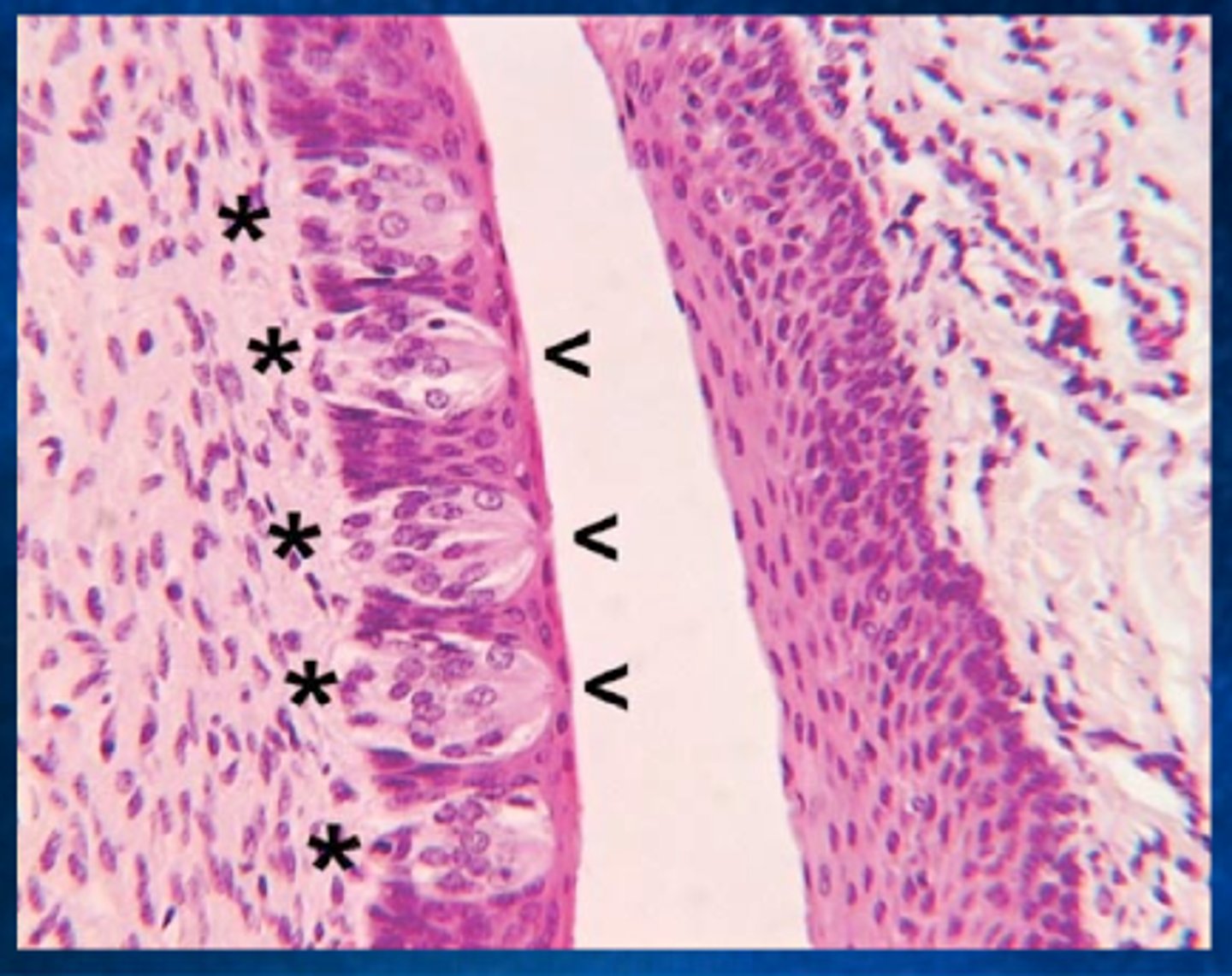Chapter 15: special senses receptors, Olfaction, Gustation
1/31
There's no tags or description
Looks like no tags are added yet.
Name | Mastery | Learn | Test | Matching | Spaced |
|---|
No study sessions yet.
32 Terms
General Senses
temperature, pain, touch, pressure, vibration, proprioception
- receptors in body wall and receptors in walls of viscera
Special senses
- gustation(taste), olfaction (smell), vision, hearing, equilibrium (vestibular sensation )
- receptors in head
Special senses receptors
- specialized cells ( except smell)
- F: dectection and transduction( conversion of signal to electrical signal/ AP
General senses receptors
- receptor at end of sensory neuron( a cranial or spinal nerve)
receptor types
-Chemoreceptors (chemicals)
-mechanoreceptors (mechanical touch pressure)
- photoreceptors (light)
Smell
-receptor cell : olfactory neurons
-receptor: chemorecpetor (air)
-Integration: temporal lobe
Taste
-receptor cell: gustatory cells
- receptor: chemoreceptor( salvia)
- pathway: brainstem, thalamus
Integration: parietal lobe
Vision
-receptor cell: rods and cones
-receptor: photoreceptor
- pathway: thalamus
- integration : occipital lobe
Hearing
- receptor cell: hair cells in cochlea
- receptor: mechanoreceptor
- pathway: brainstem, thalamus
-integration : temporal lobe
Vestibular sensation
- receptor cell: hair cells in vestibule
- receptor: mechanoreceptor
- pathway: brainstem, thalamus
Integration : parietal lobe
tastebuds
Located on rounded projections on tongue, contains gustatory and other cells

gustatory cell
- receptor
- detected chemicals dissolved in salvia in taste buds
Senstaion of taste
chemical stimulus
step 1: sensation of taste
1: receptor responds to detects specific stimulus
step 2: sensation of taste
2: chemical is dissolved in salvia, detected by receptor
step 3: sensation of taste
3: molecule movement depolarizes gustatory cell
step 4: sensation of taste
4: neurotransmitter released
step 5: sensation of taste
5: AP in cranial nerve to brain and cortex
Sweet taste
glucose and fructose
salty
Na+ ions
Sour
H+ ions
Bitter
N. Containing compound: alkaloids, posions + more
Umami
amino acids, glutamate
olfactory epithelium
lining in superior region of each nasal cavity
olfactory neuron
- receptor
- F: detect odorant , carry signals from nasal cavity to olfactory bulb
olfactory cilia
- end of dendrites of olfactory neuron, extend into roff of nasal cavity
-F: detect odorants
Olfactory bulb
- region where olfactory neuron and olfactory tract synapse
olfactory tract
- axons olfactory bulb neuron
- F: carries signal to brain
Step 1: sensatsion of smell
1: odorant detected by olfactory cilia
step 2: sensation of smell
2: depolarizion of olfactory neuron (AP)
step 3: sensation of smell
3: AP transmitted to olfactory bulb and tract
step 4: sensation of smell
4: Ap to brain cortex